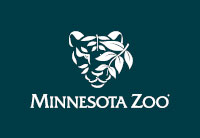Bullsnakes are known by several other common names, including gopher snake, pilot snake and pine snake. These snakes are the largest in Minnesota – averaging five feet in length. Bullsnakes in other parts of their range can be larger; in fact, the largest on record measured over eight feet long!
What They Eat
Bullsnakes play an important role in helping to limit populations of agricultural pests, such as small mammals. These nonvenomous constrictors mainly eat rodents, but will also eat birds, bird eggs, lizards, smaller snakes, insects, bats and frogs. The majority of their diet is pocket gophers, rats, mice, young rabbits and ground squirrels.
Where They Live
Bullsnakes range throughout central and western North America, from Indiana west to southwest Canada, and south to northern Mexico. They can be found in a variety of habitats including prairie, desert, woodlands, shrublands, rocky bluffs and agricultural fields, with a preference for areas with well-drained, loose soil. In Minnesota, they are found along the Mississippi, St. Croix and Minnesota rivers.
What They Do
In colder climates, bullsnakes hibernate for about six months of the year to avoid freezing. They will spend the winter below the frostline in deep underground burrows, like those of a pocket gopher or ground squirrel. Bullsnakes are solitary, but will come together for annual breeding between June and August.
How They’re Doing
With a stable North American population, bullsnakes are listed as being a “least concern” for extinction. In Minnesota, they are listed as a species of “special concern” with major threats to bullsnake survival being habitat destruction and degradation.
Sidebar Content
- Bullsnakes are non-venomous and kill their prey by constriction. When in burrows, bullsnakes kill by pressing the prey against the tunnel wall as it is attempting to escape.
- Bullsnakes are often mistaken for rattlesnakes because of similar coloration and because they have a tendency to vibrate their tails when threatened. When they do this in areas with dried leaf litter, it can sound like a rattle.
- The name “bull” snake originated because of the loud, raspy hissing sounds made by the snake when startled, which sounded like the snorting of a bull.
- The largest bullsnake ever recorded in Minnesota measured 8 feet 4 inches!
- Bullsnakes are 1 of 17 species of snakes found in Minnesota.
- In spring and fall, Minnesota bullsnakes are more active during the day. However, during the heat of summer, they are more active at night.
The International Union for the Conservation of Nature lists bullsnakes as being a “least concern” for extinction. Some local declines have occurred due to habitat destruction and degradation. But overall, the North American population is stable. While bullsnakes can survive in semi-agricultural landscapes and in areas with rural residential development, they prefer native prairies and oak savannahs. Historically, agriculture was the primary threat in Minnesota, but urban sprawl and lack of fire are the main threats today. Without fire, environments become overgrown with woody plants, degrading important bullsnake habitat.
Things the Zoo’s Done/Doing
In the summer of 2018, the Ulysses S. Seal Conservation Grant program provided funding for Zoomobile Interpretive Naturalist and snake enthusiast Donnie Crook to work with the Minnesota Department of Natural Resources (DNR) to study bullsnakes in western Minnesota. This work was part of a project to improve long-term sustainability of grassland snake populations in Minnesota, focusing on bullsnakes and plains hog-nosed snakes. Donnie worked with DNR staff to locate, mark and track bullsnakes at two Minnesota River Valley sites. DNR biologists follow bullsnake movements and identify habitats used so that significant habitat features, such as den sites and nesting areas, can be protected. In addition to providing field staff support, the Ulysses S. Seal Conservation Grant provided telemetry gear, snake den protective equipment, temperature monitoring equipment, drift fences used in mark-recapture efforts, and veterinary services.












